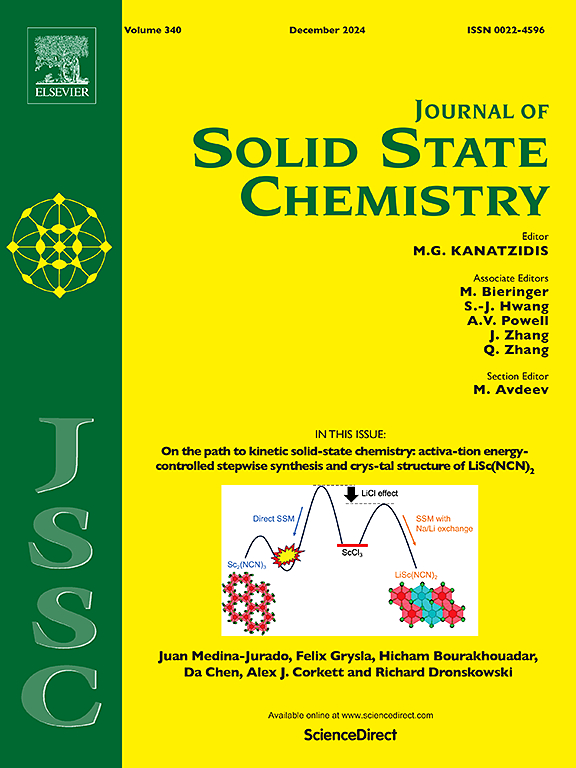Enhanced photoelectrochemical water splitting performance of CuBi2O4 nanosphere photocathode by CuO decoration
IF 3.2
3区 化学
Q2 CHEMISTRY, INORGANIC & NUCLEAR
引用次数: 0
Abstract
A photoelectrochemical cell (PEC) was invented a few decades ago to split water molecules into hydrogen (H2) and oxygen (O2) gases. Historically, the efficiency of PEC has been relatively small, which limits its application in the field of H2 fuel generation. In this work, CuBi2O4 and enchanted CuO/CuBi2O4 heterostructures were investigated. The pure and enchanted nanostructures were synthesized by a one-pot hydrothermal method. The film coated on the transparent conducting electrode employed the doctor blade method. The crystal structures of the products were analyzed by X-ray diffraction. The crystal structure of CuBi2O4 and CuO were identified as kusachiite and ternorite, respectively. Scanning electron microscopy, Transmission electron microscopy, and X-ray photoelectron spectroscopy investigated those materials' surface morphology and chemical species. The photocurrent density of the material was investigated under visible light illumination. The photocurrent signal of all CuO/CuBi2O4 heterostructure photocathodes exhibited higher values than the pristine CuBi2O4 and CuO. The photocurrent of the best CuO/CuBi2O4 heterostructure photocathode was 1.2 mA/cm−2 at applied 0.5 V (vs. RHE) greater than 5 times the pure CuBi2O4 and CuO materials. Electrochemical impedance spectroscopy was used to reveal the internal impedance of the PEC. Regarding the CuO forming to CuBi2O4, the internal resistance of all CuO/CuBi2O4 photocathodes showed lower impedance, and the Mott-Schottky analysis showed that the charge carrier density of CuBi2O4 enhanced by CuO was increased, resulting in a greater photocurrent density of the PEC.

求助全文
约1分钟内获得全文
求助全文
来源期刊

Journal of Solid State Chemistry
化学-无机化学与核化学
CiteScore
6.00
自引率
9.10%
发文量
848
审稿时长
25 days
期刊介绍:
Covering major developments in the field of solid state chemistry and related areas such as ceramics and amorphous materials, the Journal of Solid State Chemistry features studies of chemical, structural, thermodynamic, electronic, magnetic, and optical properties and processes in solids.
 求助内容:
求助内容: 应助结果提醒方式:
应助结果提醒方式:


